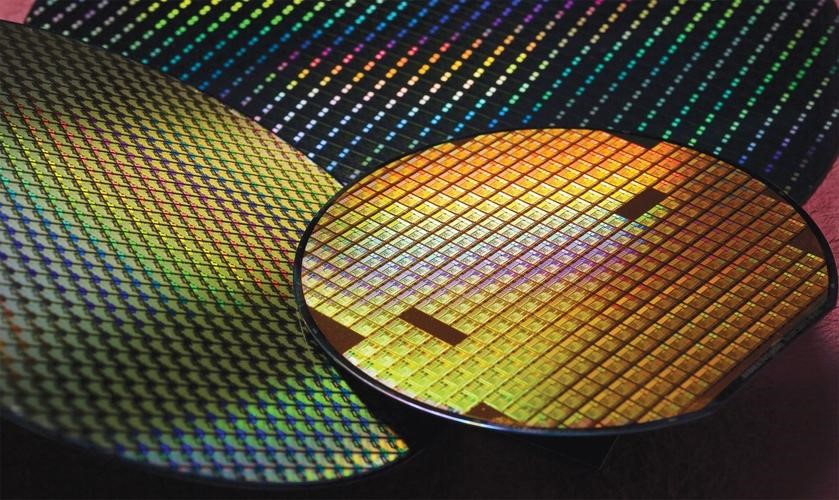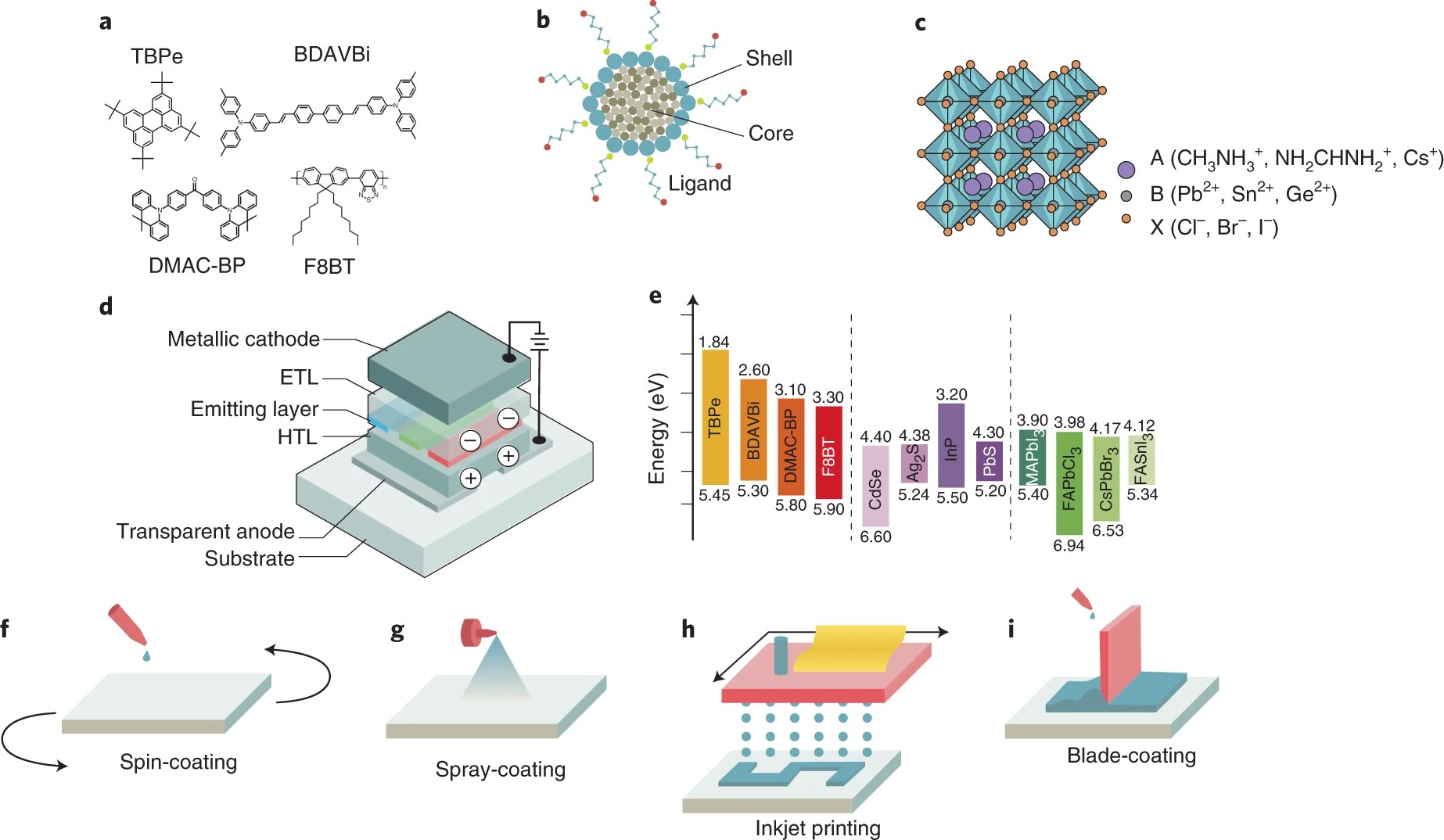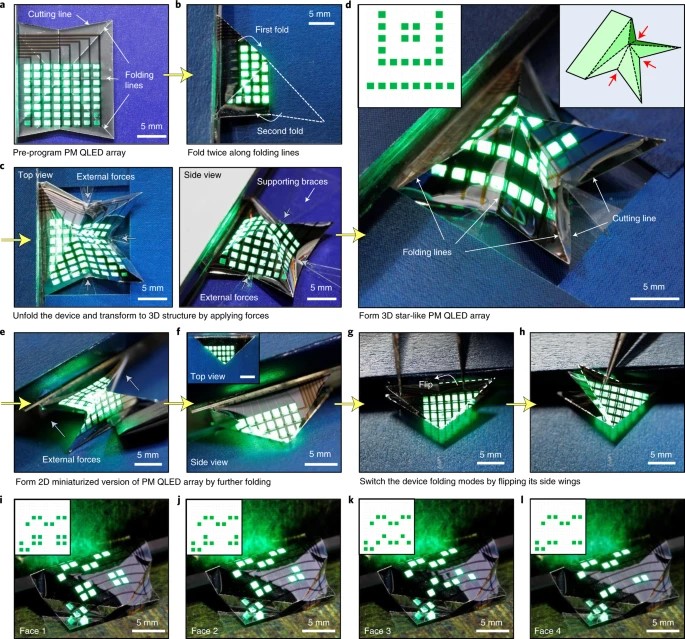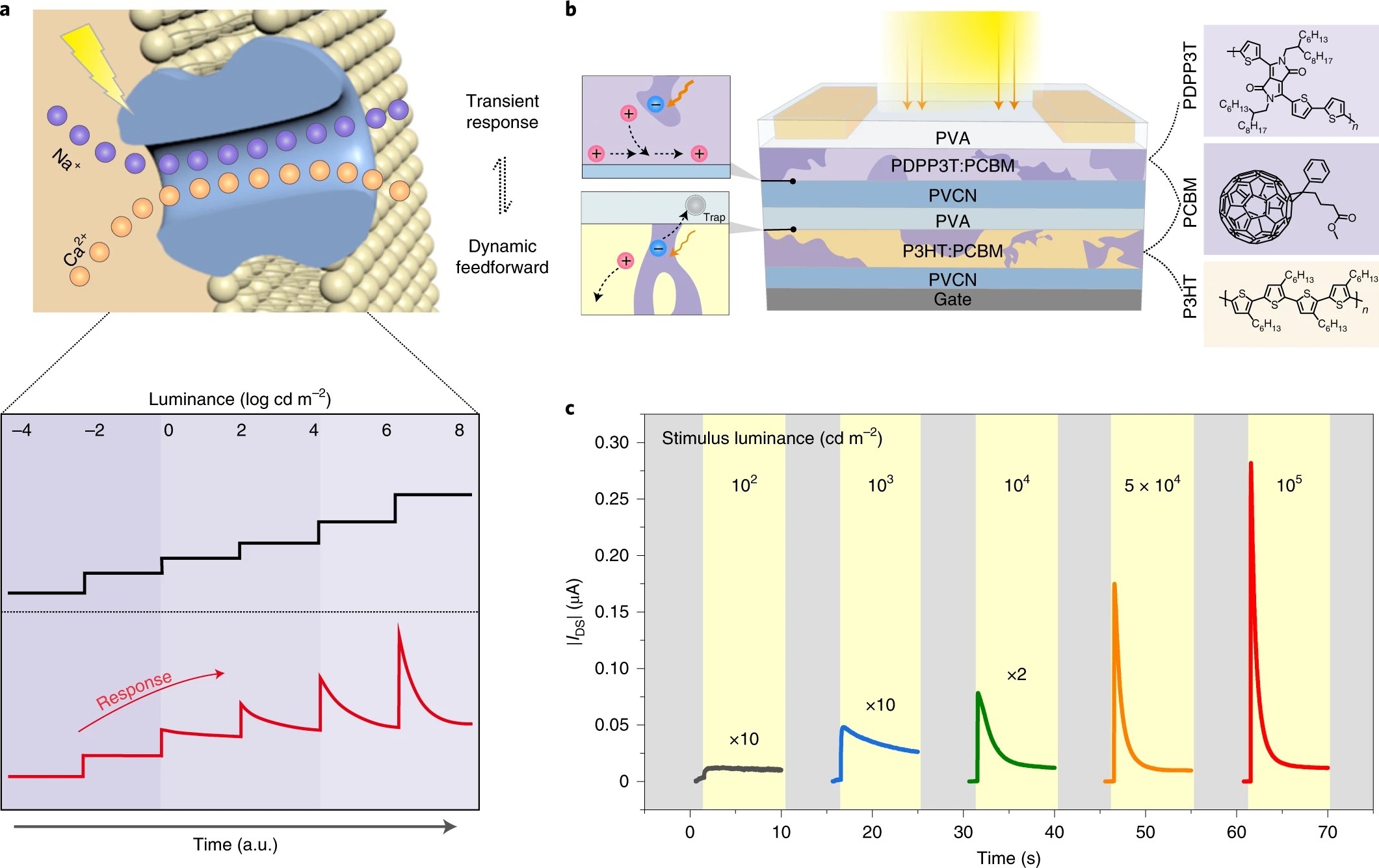热点论文带您领略光电半导体领域的最新进展——图书馆前沿文献专题推荐服务(50)
2021-11-08

集成电路已经进入2nm时代,纯电子学架构在物理上必然限制集成电路的持续发展,“光电融合”为集成电路的技术革新提供了新思路。
在本期的文献推荐中,关注点着眼于光电半导体领域的最新进展,包括:用于下一代数据通信的新兴发光二极管,具有视觉适应能力的光电晶体管,三维可折叠量子点发光二极管,以及光强依赖的主动光适应有机晶体管。供相关领域的科研人员参考。
领域一 用于下一代数据通信的新兴发光二极管
Emerging light-emitting diodes for next-generation data communications
Aobo Ren, etc.
Nature Electronics, 2021, 4: 559- 572
The continuing development of consumer electronics, mobile communications and advanced computing technologies has led to a rapid growth in data traffic, creating challenges for the communications industry. Light-emitting diode (LED)-based communication links are of potential use in both free space and optical interconnect applications, and LEDs based on emerging semiconductor materials, which can offer tunable optoelectronics properties and solution-processable manufacturing, are of particular interest in the development of next-generation data communications. Here we review the development of emerging LED materials—organic semiconductors, colloidal quantum dots and metal halide perovskites—for use in optical communications. We examine efforts to improve the modulation performance and device efficiency of these LEDs, and consider potential applications in on-chip interconnects and light fidelity (Li-Fi). We also explore the challenges that exist in developing practical high-speed LED-based data communication systems.

Fig. LEDs based on emerging materials.
领域二 具有视觉适应能力的光电晶体管
A phototransistor with visual adaptation
Jiansheng Jie, etc.
Nature Electronics, 2021, 4: 460-461
An organic phototransistor with two complementary bulk heterojunctions exhibits light-intensity-dependent adaptation behaviour that mimics the behaviour of the human visual system.

Fig. Organic phototransistor with active visual adaptation
领域三 三维可折叠量子点发光二极管
Three-dimensional foldable quantum dot light-emitting diodes
Dong Chan Kim, etc.
Nature Electronics, 2021, 4: 671-680
Flexible light-emitting devices that can transform from two-dimensional to three-dimensional (3D) forms could be of use in the development of next-generation displays. Various approaches for converting two-dimensional structures into 3D architectures have been explored, including origami methods that rely on folding along lines in which a structure has been thinned. But the fabrication of foldable 3D light-emitting devices remains challenging due, in particular, to the lack of a practical method for patterning the folding lines. Here we show that 3D foldable quantum dot light-emitting diodes (QLEDs) can be created using laser patterning and metal etch-stop layers with customized ablation thresholds. The approach allows etching to be limited to selected layers of the multilayered QLEDs, and it can be precisely tuned by using alloy-type etch-stop layers. The approach can be used to create QLED architectures with extremely small bending radii (0.047 mm), and we illustrate its capabilities by fabricating a 3D foldable passive matrix array of QLEDs that can display letters and numbers.

Fig. Dynamic 2D–3D transformation of the foldable PM QLED array
领域四 光强依赖的主动光适应有机晶体管
An organic transistor with light intensity-dependent active photoadaptation
Zihan He, etc.
Nature Electronics, 2021, 4: 522-529
The development of artificial visual systems that mimic biological systems requires devices that can autonomously adapt their response to varying stimuli. However, emulating biological feedforward visual adaptation is challenging and requires complementary photoexcitation and inhibition, ideally in a single device. Here we show that an organic transistor that incorporates two bulk heterojunctions is capable of light intensity-dependent active photoadaptation. The approach couples the photovoltaic effect in bulk heterojunctions with electron trapping in the dielectric layer, allowing adaptive modulation of the carrier concentration of the transistor. Our device exhibits active photoadaptation behaviour for light intensities ranging over six orders of magnitude (1 to 106 cd m−2). We also define an active adaptation index to describe the luminance-dependent changes to sensitivity, including auto-background control, which for our devices is comparable to that of the human visual system (less than 2 s at 1 × 104 cd m−2).

Fig. Visual adaptation in bioreceptors and a bioinspired OAAT
往期精彩推荐
前沿论文带您解读5G应用领域 ——图书馆前沿文献专题推荐服务(2)
热点论文解读AI应用领域 ——图书馆前沿文献专题推荐服务(3)
热点论文带您探究5G和未来通信——图书馆前沿文献专题推荐服务 (4)
前沿文献带您解读自然语言处理技术 ——图书馆前沿文献专题推荐服务(5)
热点论文带您探究5G和未来通信材料技术领域 ——图书馆前沿文献专题推荐服务(6)
热点论文解读AI应用领域 ——图书馆前沿文献专题推荐服务(3)
热点论文带您探究5G和未来通信——图书馆前沿文献专题推荐服务 (4)
前沿文献带您解读自然语言处理技术 ——图书馆前沿文献专题推荐服务(5)
热点论文带您探究5G和未来通信材料技术领域 ——图书馆前沿文献专题推荐服务(6)
热点文献带您关注AI情感分类技术 ——图书馆前沿文献专题推荐服务(7)
热点论文带您探究6G的无限可能——图书馆前沿文献专题推荐服务(8)
热点文献带您关注AI文本摘要自动生成 ——图书馆前沿文献专题推荐服务(9)
热点论文:5G/6G引领社会新进步——图书馆前沿文献专题推荐服务(10)
热点文献带您关注AI机器翻译 ——图书馆前沿文献专题推荐服务(11)
热点论文与您探讨5G/6G网络技术新进展——图书馆前沿文献专题推荐服务(12)
热点文献带您关注AI计算机视觉 ——图书馆前沿文献专题推荐服务(13)
热点论文与带您领略5G/6G的硬科技与新思路 ——图书馆前沿文献专题推荐服务(14)
热点文献带您关注AI计算机视觉 ——图书馆前沿文献专题推荐服务(15)
热点论文带您领略5G/6G的最新技术动向 ——图书馆前沿文献专题推荐服务(18)
热点文献带您关注图神经网络——图书馆前沿文献专题推荐服务(19)
热点论文与带您领略5G/6G材料技术的最新发展——图书馆前沿文献专题推荐服务(20)
热点文献带您关注模式识别——图书馆前沿文献专题推荐服务(21)
热点论文与带您领略6G网络技术的最新发展趋势 ——图书馆前沿文献专题推荐服务(22)
热点文献带您关注机器学习与量子物理 ——图书馆前沿文献专题推荐服务(23)
热点论文与带您领略5G/6G通信器件材料的最新进展 ——图书馆前沿文献专题推荐服务(24)
热点文献带您关注AI自动驾驶——图书馆前沿文献专题推荐服务(25)
热点论文与带您领略5G/6G网络安全和技术的最新进展——图书馆前沿文献专题推荐服务(26)
热点文献带您关注AI神经网络与忆阻器——图书馆前沿文献专题推荐服务(27)
热点论文与带您领略5G/6G电子器件和太赫兹方面的最新进展——图书馆前沿文献专题推荐服务(28)
热点文献带您关注AI与机器人——图书馆前沿文献专题推荐服务(29)
热点论文与带您领略5G/6G热点技术的最新进展——图书馆前沿文献专题推荐服务(30)
热点文献带您关注AI与触觉传感技术——图书馆前沿文献专题推荐服务(31)
热点论文与带您领略5G/6G热点技术的最新进展——图书馆前沿文献专题推荐服务(32)
热点文献带您关注AI深度学习与计算机视觉——图书馆前沿文献专题推荐服务(33)
热点论文与带您领略未来通信的热点技术及最新进展——图书馆前沿文献专题推荐服务(34)
热点文献带您关注AI强化学习——图书馆前沿文献专题推荐服务(35)
热点论文与带您领略5G/6G基础研究的最新进展——图书馆前沿文献专题推荐服务(36)
热点文献带您关注AI与边缘计算——图书馆前沿文献专题推荐服务(37)
热点论文与带您领略5G/6G领域热点研究的最新进展——图书馆前沿文献专题推荐服务(38)
热点文献带您关注AI技术的最新进展——图书馆前沿文献专题推荐服务(39)
热点论文与带您领略5G相关领域研究的最新进展——图书馆前沿文献专题推荐服务(40)
热点文献带您关注AI视觉跟踪——图书馆前沿文献专题推荐服务(41)
热点论文带您领略未来通信在海空领域研究的最新进展——图书馆前沿文献专题推荐服务(42)
热点文献带您关注AI与医学研究——图书馆前沿文献专题推荐服务(43)
热点论文带您领略未来通信在材料领域研究的最新进展——图书馆前沿文献专题推荐服务(44)
热点文献带您关注AI与医学图像——图书馆前沿文献专题推荐服务(45)
热点论文带您领略未来通信在光电材料及信息编码领域的最新进展——图书馆前沿文献专题推荐服务(46)
热点文献带您关注AI与生物学——图书馆前沿文献专题推荐服务(47)
热点论文带您领略未来通信在新材料技术领域的最新进展——图书馆前沿文献专题推荐服务(48)
热点文献带您关注AI与人脸识别——图书馆前沿文献专题推荐服务(49)